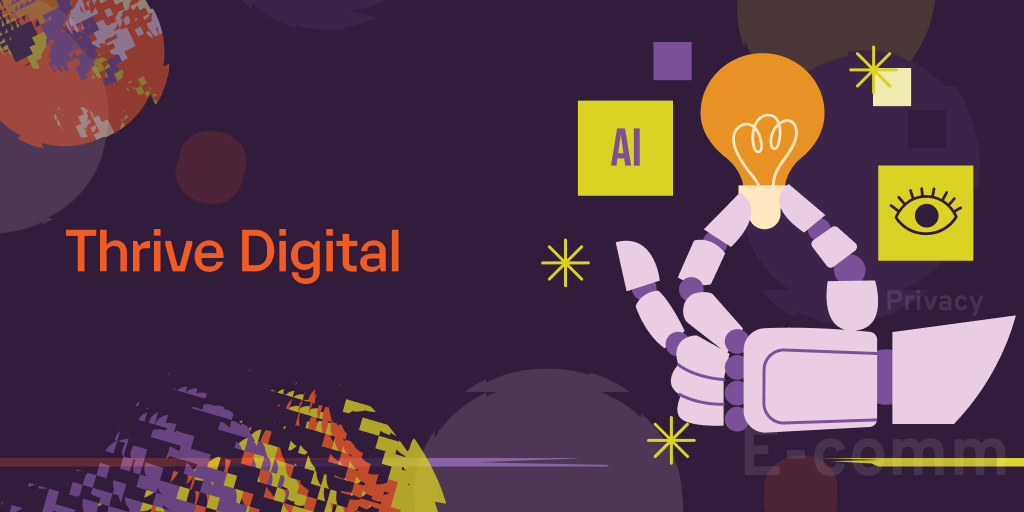
TL;DR In 2024, Meta is intensifying its use of artificial intelligence (AI) in advertising, notably through its new Advantage+ suite of automated ad products and the AI Sandbox.
- Advantage+ aims to enhance ad performance by automating key areas such as audience targeting, creative content, platform placement, and budget allocation.
- The AI Sandbox offers generative design tools, including text variation, background generation, and image outcropping.
While the targeting and bidding functions of Meta's AI tools have shown success and we recommend using them (especially for e-commerce clients) we don’t recommend the creative tools for everyone yet. Why? Lack of brand control, safety issues, and the templated nature of AI-generated graphics.
Meta, like Google and other social ad platforms, has been using artificial intelligence and machine learning (AI/ML) for a long time. Since before ChatGPT even became a household name. But as AI expands into other areas and interest, funding, and adoption grow, it’s no surprise Meta is pushing harder here than ever before. In 2024, the impact of AI on Meta advertising is reaching new heights, reshaping the way advertisers target, bid, and create content. Let’s talk about what that means for you.
Wait, wasn’t Meta already using AI/ML?
Yup, it sure was. Meta has long since been using algorithms and machine learning to automate bidding, ad serving, and audience expansion for years but now they’re setting their sights on automating more of the process. The difference here is the scope of what they’re looking to achieve and the tools they’re rolling out to do so.
What new AI is coming to Meta?
Enter Advantage+ and AI Sandbox.
What is Advantage+?
Advantage+ is Meta’s suite of automated ad products. Currently, they’re offering Advantage+ shopping campaigns and Advantage+ app campaigns but the goals are the same. Maximizing performance and the value of each ad impression by automating five key areas:
- Audience (who is seeing the ads)
- Creative (what ads are they seeing)
- Destination (what platforms do they see those ads on)
- Placement (where do they see those ads on those platforms)
- Budget (what does it cost to serve those ads or generate those actions)
What is AI Sandbox?
Well, it’s actually just an evolution/add on to the Advantage+ suite of tools but we like to think of them separately as we don’t really use AI Sandbox yet (we’ll get to that shortly). AI Sandbox is Meta’s answer to generative design tools. According to Meta, it features three key functionalities:
Text Variation: Generates multiple versions of text to highlight the important points of an advertiser’s copy, giving advertisers choice to try different messages for certain audiences.

Background Generation: Creates background images from text inputs, allowing advertisers to try various backgrounds more quickly and diversify their creative assets.
Image Outcropping: Adjusts creative assets to fit different aspect ratios across multiple surfaces, like Stories or Reels, allowing advertisers to spend less time and resources on repurposing creative assets.

How we’re using Meta’s AI tools (and how we think you should be)
As of now, AI on Meta serves three main functions: targeting, bidding, and creative. For many years we’ve been experimenting with automated bidding as well as leveraging seed lists and conversion data and have had a lot of success using this targeting automation for our client. The more signals you can provide to the ad platform on users who have converted, the more the algorithm learns and provides better suggestions for an improved conversion rate. We’ve noticed that purchase recency is a big factor here and for that reason, we’ve had a lot more success using these targeting tools on our e-commerce clients.
There are some restrictions in the data that Advantange+ takes in and what it weights, so we’ve had less luck with B2B and lead generation clients. Not to say you shouldn’t try it out, but don’t put all your eggs in this basket.
If it sounds like we’re less excited about the creative functionalities, it’s because we are (at the moment).
Why we aren’t using Meta’s creative AI (yet)
Personally, we haven’t been making much use of the Meta creative tools just yet. So far, these tools don’t offer the same sophistication as other tools we use, like Adobe or Figma. Because we’re an agency with a talented creative team, we haven’t seen it offer the level of control our clients require and that our team can better deliver with non-Meta tools.
It’s not all bad, but it’s not appropriate for us or our clients at this time.
What we don’t like about Meta’s generative AI for creative
Brand control is missing. Big clients have big sets of brand guidelines and we/they can’t risk venturing outside of that.
Brand safety isn’t there yet. Maybe the copy could be fine, maybe the imagery could be fine, but together they might be a land mine. There’s just too much at risk for high visibility brands — especially those with more sensitive products or demographics.
It’s too templated. Right now, there’s a lot of homogeneity that comes from using AI generated graphics. Big brands have the resources to dedicate to custom creative, why risk the effectiveness of that?
There are better tools for this type of work. Our creative team isn’t against generative AI, in fact they use it all the time for outcropping, to adjust ad sizes, and even to kick start some of the ad body copy. But it’s to speed up production grunt work in the tools they’re already using like Figma or the Adobe suite — not to outsource the entire creative endeavor. While we do use it for some creative ideation, we’re still not betting the whole farm here.
The democratization of design has been coming for years with graphic building tools like Canva, website builders like Wix, and now generative AI like Sandbox in Meta. They’re awesome for small, scrappy teams and these tools are going to keep coming and evolving. Like all new technology, we’re using it where appropriate to make work better and easier and to stay ahead of the times, but we’re proceeding with as much caution as curiosity. Big brands need to make sure they’re prioritizing safety.
The future of Meta’s AI efforts
If I were to pick up my crystal ball and look to the future, I would see even more creative tools coming down the line. At the Meta summit Thrive attended mid-2023 there was a heavy focus on creative tools. They were adamant that creative is the future of their platforms, hence why they’ve been investing so deeply in Reels.
As to exactly what those creative advancements will look like, we can’t say, but we have a few thoughts. Historically, Meta has been heavily “inspired” by other platforms tools (think TikTok to Reels or Snapchat to Stories). So if you’re curious what’s coming for Meta’s generative AI we can likely look to other tools further ahead in the space like Adobe.
Do we think AI is a good thing?
We’re in digital advertising and we often say that “change is the only constant”. We have been interacting with AI / ML for years across multiple Ad Platforms, it’s just the tools available and the impact of these tools is rapidly expanding. It’s already changed the way we work on campaigns and will only continue to evolve how we approach growing client businesses.
I like that we can speed up creative production, expand our audience sets, and further improve bidding efficiency and spend. I’m careful to monitor brand safety on the creative front.
One thing I do know? The hurtle towards AI will only continue, like it or not.
So what now?
As AI continues to shape Meta advertising in 2024, advertisers find themselves at a crossroads. Embracing AI can mean efficiency gains and innovative possibilities, but challenges remain, particularly in the realm of creative control. The future of Meta advertising undoubtedly lies in the hands of those who adapt, experiment, and stay ahead in this ever-evolving landscape. So get in, get your hands dirty, and try a few Advantage+ campaigns. Just don’t bet the whole farm on it yet.
Want to learn more about performance marketing on Meta? Check out our expert Q&A all about Meta advertising!
 Akshita Tripathi
Akshita Tripathi